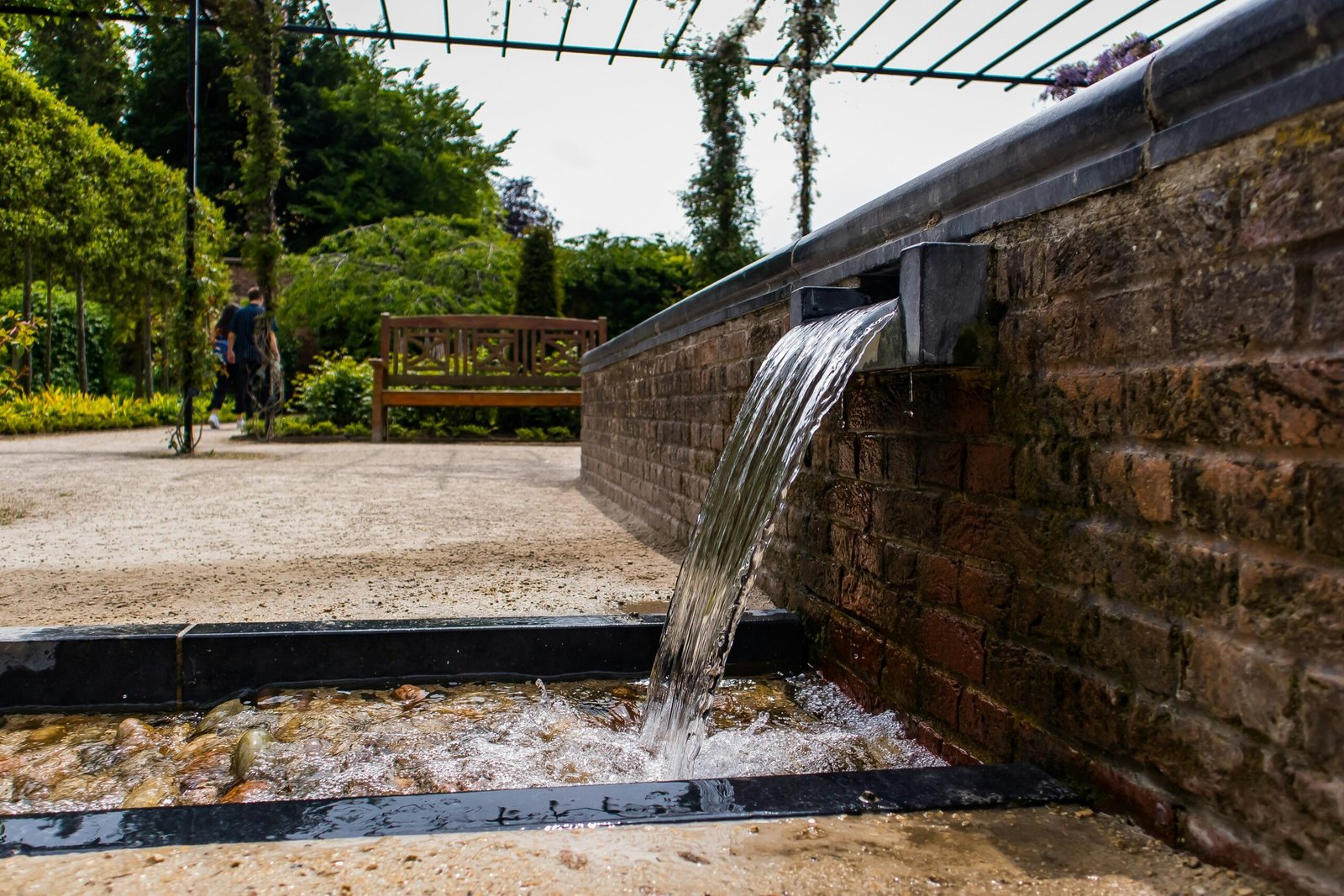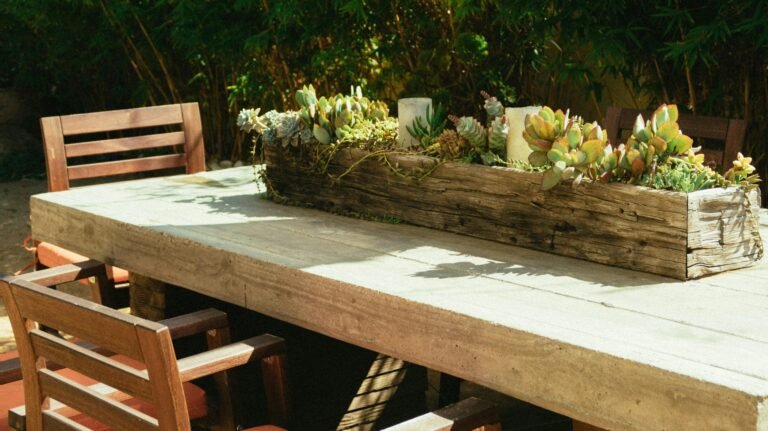You’ve spent hours pinning dream garden photos, and every time you see one with a trickling fountain or a serene little pond, you pause. That. That’s what you want — not just a garden that looks good, but one that feels good. Calming. Peaceful. Like a retreat from the noise of your day.
But then you think… Am I really going to install a water feature? That sounds like a lot. Expensive. Complicated. Probably needs a pump, wiring, digging — and what if it turns into a green swamp?
You’re not alone. Most people love the idea of adding water to their garden — they just get stuck at the “how”. That’s where this article comes in.
You’re going to learn which types of water features work best for different spaces, how much effort they really take (spoiler: not as much as you think), and how to keep yours looking and sounding great without turning into a weekend chore. Whether you’ve got a big garden or just a corner of patio, this guide will help you create a peaceful retreat — one bubbling, splashing, or trickling feature at a time.
Why Water Features Make a Big Impact
You might think a water feature is just a “nice-to-have.” But it does more than sit pretty in your garden. Here’s why even the smallest one can completely change how your outdoor space feels:
1. They calm your mind
The sound of moving water has a natural, almost instant calming effect. It drowns out traffic, neighbours, and general background noise — making your garden feel like a private hideaway, even in the middle of a busy street. It’s not just you either; studies have shown that water sounds reduce stress and promote relaxation.
2. They elevate your space
A well-placed fountain or pond makes your garden look designed — not just thrown together. It adds a focal point, texture, and movement that instantly upgrades your space, whether you’ve got a sprawling lawn or a small patio.
3. They attract life
Birds, bees, butterflies — water invites them in. If you want your garden to feel alive and buzzing (in a good way), adding a water feature is one of the easiest ways to do it. Even a shallow birdbath can become a hotspot for wildlife.
4. They help mask unpleasant noise
Got noisy neighbours? Or a main road just over the fence? A small fountain’s trickle can go a long way in masking those distractions — helping you focus, breathe, or just enjoy your tea in peace.
5. They connect you to nature
It’s easy to forget how much we need nature until we actually pause in it. A water feature invites you to slow down, notice the light reflecting off the surface, or listen to the quiet ripple of water. It’s grounding. Simple. And surprisingly powerful.
Popular Types of Garden Water Features
Not all water features require a shovel, a plumber, or a huge budget. Some are as simple as placing a decorative pot in the right spot. Here are a few of the most popular and practical types, depending on your space and style:
1. Birdbaths
- Best for: Beginners, small spaces, wildlife lovers.
- Why it works: It’s classic, low-maintenance, and immediately attracts birds.
- Good to know: You don’t need anything fancy. Even a shallow dish on a stand will do the trick — just keep the water clean and topped up.
2. Container Fountains
- Best for: Patios, balconies, renters, or anyone short on space.
- Why it works: These self-contained units often just need to be filled and plugged in. Some use solar power, so no wiring required.
- Good to know: Choose a style that matches your garden vibe — ceramic pots, stacked stones, or even a converted trough.
3. Wall Fountains
- Best for: Courtyards or walled gardens.
- Why it works: They save space and add that gentle trickling sound without needing floor space.
- Good to know: You’ll need a nearby power source unless you go solar. Wall mounting may take a bit of prep.
4. Small Garden Ponds
- Best for: People with a bit more space and confidence.
- Why it works: Still water brings a different kind of calm — plus you can add plants, fish, or floating candles.
- Good to know: You’ll need to dig a bit, line it properly, and manage algae. But once it’s in, it can be surprisingly low-maintenance.
5. Waterfalls and Cascades
- Best for: Larger gardens or sloped areas.
- Why it works: Visually stunning, highly soothing, and great for masking noise.
- Good to know: These often need a proper pump and a bit of planning — but can be done DIY if you’re handy or up for a weekend project.
How to Choose the Right Water Feature for Your Space
It’s easy to get swept up by the Pinterest-perfect setups — but the best water feature for your garden is the one that actually fits your space, lifestyle, and budget. Here’s how to narrow it down:
1. Look at your space (honestly)
- Small garden or balcony? Go for a birdbath, tabletop fountain, or a wall-mounted feature.
- Medium-sized garden? You’ve got room for a freestanding fountain or even a small pond.
- Large garden? The sky’s the limit. Think multi-level waterfalls, ponds with bridges, or even a stream.
💡 Tip: Don’t overdo it. A huge water feature can overwhelm a small space — and a tiny one can get lost in a big garden. Match scale to setting.
2. Consider sun and shade
- Solar-powered? You’ll need a good few hours of direct sun per day.
- Ponds in shade? Less algae. But if it’s too shady, you might struggle to grow pond plants.
3. Think about upkeep
- Do you want something you can set and forget?
→ Choose a solar container fountain or birdbath. - Happy to do a little maintenance?
→ A pond or waterfall might suit you.
💡 Reality check: All water features need some upkeep — whether that’s cleaning a pump, scrubbing algae, or topping up water. But with the right choice, it doesn’t have to be a hassle.
4. Match it to your garden’s vibe
- Modern minimalist? Go for a sleek steel or stone fountain.
- Cottage-style garden? Think rustic pots, stone birdbaths, or a gentle trickle from a barrel.
- Wildlife-friendly? Choose shallow edges, moving water, and plenty of cover.
5. Budget wisely
You can spend £30 or £3,000. Know your ceiling, then shop within it. DIY kits, second-hand finds, or even upcycled containers can make stunning water features on a budget.
Installation Basics: DIY or Call in a Pro?
Installing a water feature sounds intimidating — but it doesn’t have to be. Here’s how to figure out what you can tackle yourself, and when it makes sense to get a little help.
1. Start with a simple setup
If you’re new to this, go small and self-contained.
- A birdbath needs zero installation. Just place it, fill it, done.
- A container fountain often just needs a plug socket or a sunny spot for solar power.
- Many kits come with pumps included — you just follow a few instructions and let the water flow.
💡 Tip: Position your water feature on solid, level ground. Wobbly = wonky water.
2. Got power?
- Electric fountains: Make sure you’ve got an outdoor plug or extension rated for outdoor use.
- Solar-powered options: Perfect if you don’t want to mess with wiring — just check the spot gets full sun.
- Battery-powered pumps: A decent middle ground, though they’ll need recharging or replacing over time.
3. Digging in? Plan it properly.
For ponds or built-in waterfalls:
- Mark out your space. Use a hose or rope to shape it before you start digging.
- Check the depth. Even small ponds should be deep enough to stop them drying out — or freezing solid in winter.
- Use a proper liner. It prevents leaks and makes maintenance easier.
- Hide the pump. Tuck it under stones or plants to keep things looking natural.
💡 Not sure? YouTube has loads of step-by-step videos, but if electrical work or complex plumbing is involved, calling a pro is the safer (and faster) bet.
4. Final positioning matters
Place your feature where:
- You can see and hear it from where you sit.
- It’s not under loads of trees (hello, leaves and gunk).
- It’s near a tap or watering can for easy top-ups.
Simple Maintenance Tips
You don’t want your peaceful water feature turning into a murky science experiment. Good news: with just a little upkeep, you can keep things clean, flowing, and looking great all year round.
1. Keep the water moving
Still water = mosquito magnet.
A small pump keeps things circulating and helps prevent algae. Most plug-in or solar fountains already have this built in — just make sure it’s running regularly.
💡 Tip: If your pump starts to struggle, clean the filter — often it’s just blocked with a bit of debris.
2. Top it up
Evaporation happens — especially in summer.
Check your water level every few days and top up as needed. Not only does this keep the pump from running dry, it also keeps things looking fresh.
3. Clear out gunk
Leaves, petals, bird droppings… they all build up fast.
- Skim the surface regularly with a small net or your hand.
- Give the basin or container a gentle scrub every few weeks, especially if algae starts to show.
4. Watch for algae
- A bit of algae? Normal.
- A lot of algae? Time to act.
You can use a non-toxic algae treatment, especially for fountains. For ponds, adding plants like water lilies or oxygenating grasses helps balance things naturally by shading the water and competing with algae for nutrients.
💡 Avoid harsh chemicals — especially if birds, pets, or fish are part of the picture.
5. Winter care
In colder climates:
- Bring small features inside if they’re not frost-proof.
- Remove pumps and store them dry over winter.
- For ponds: Keep part of the surface ice-free (a floating ball can help) to let gases escape and protect any wildlife below.
Final Thoughts: Peace, Not Perfection
It’s easy to get caught up in perfect Pinterest gardens — every plant in bloom, every feature glistening. But your garden isn’t a showroom. It’s your space to breathe, slow down, and feel calm. And that’s exactly what a water feature can help you do.
Whether it’s a simple birdbath or a bubbling fountain tucked in a corner, adding water to your garden doesn’t have to be hard, expensive, or overwhelming. Start small. Start simple. See how it makes you feel.
And remember — the goal isn’t perfection. It’s peace.
Alex is the creator of Homely Haven, a space dedicated to simple, stylish ideas for interiors and gardens alike. With a passion for cozy living rooms, inviting outdoor spaces, and practical DIY solutions, Alex shares tips and guides that help turn any house into a true home.
From budget-friendly decorating hacks to weekend garden projects, the goal is always the same: to inspire you to create spaces that feel personal, beautiful, and welcoming. When not writing, Alex is usually rearranging furniture, sketching new garden layouts, or exploring design trends for the next project.








